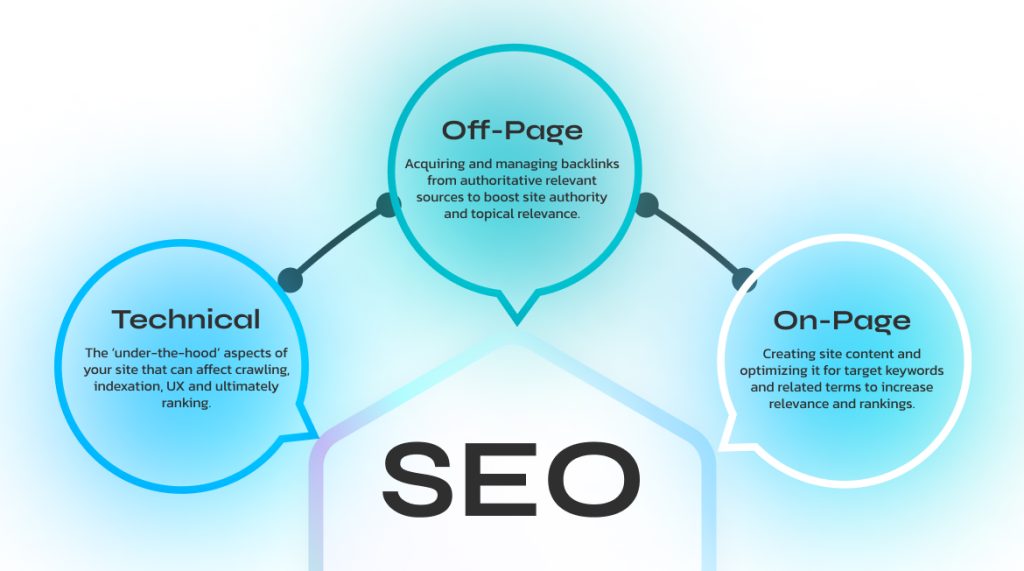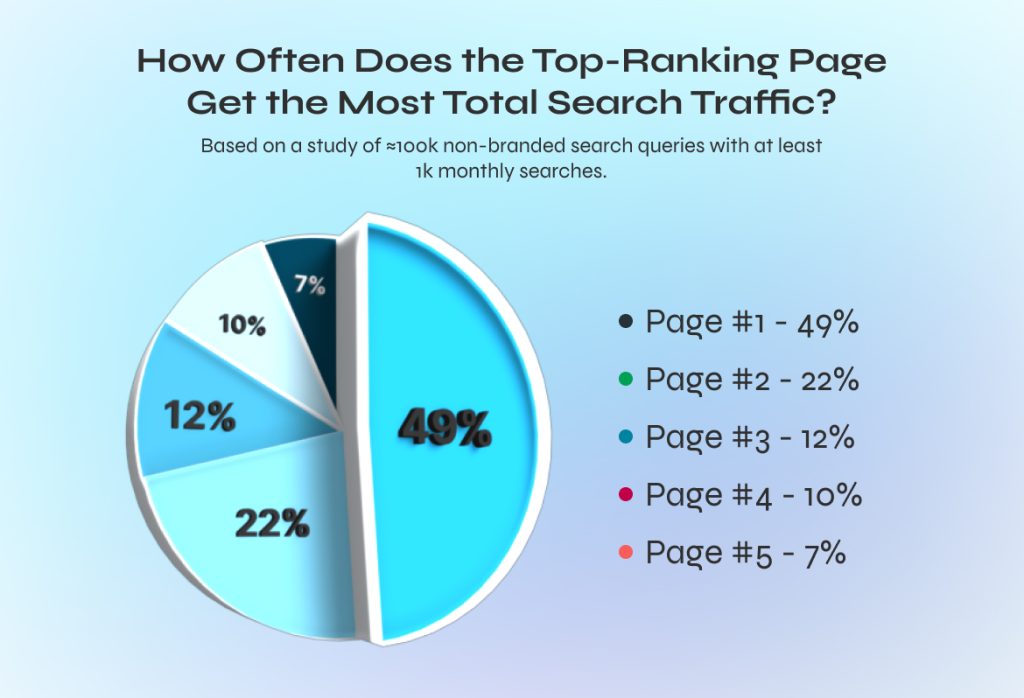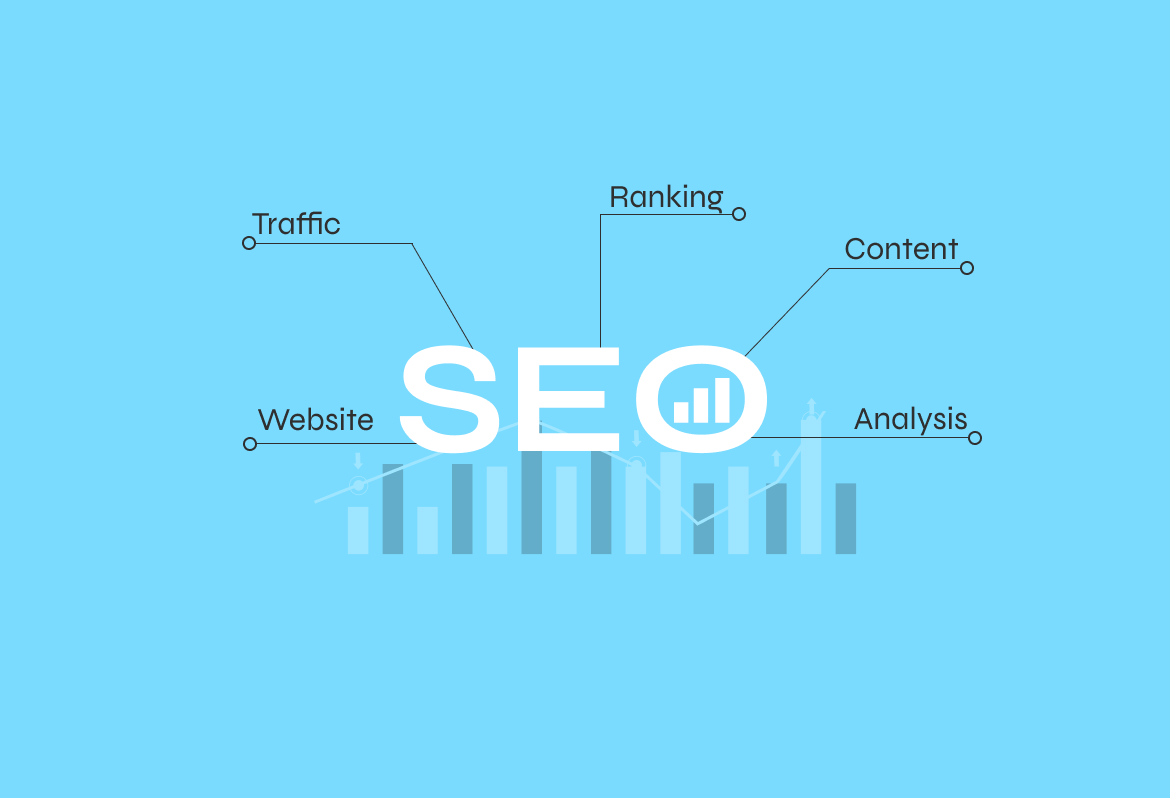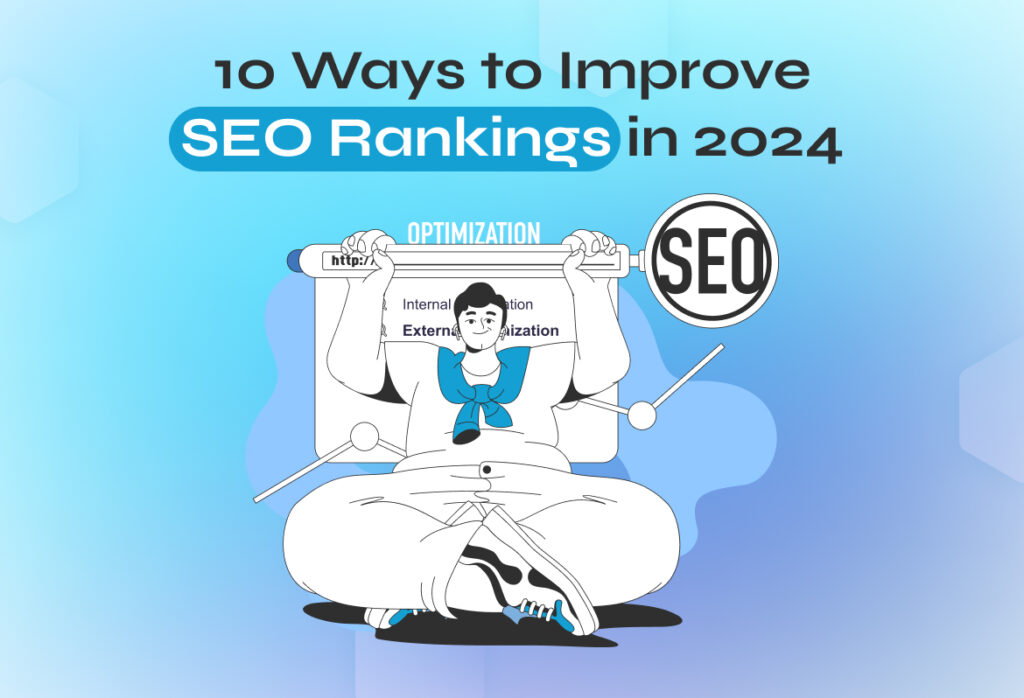If you’re new to the world of online marketing, you might wonder, “What is SEO, and why does it matter?” It’s the secret sauce behind the visibility of websites, and it’s what makes the internet a level playing field for businesses of all sizes.
In the ever-evolving world of digital marketing, few concepts hold as much importance and intrigue as Search Engine Optimization (SEO).
SEO, or Search Engine Optimization, is the practice of increasing the quantity and quality of traffic to a website through organic search engine results.
In this comprehensive guide, we’ll demystify SEO, explore its advantages, delve into its different types, uncover the different SEO techniques that make it work, and share the best practices that could transform your local presence. By the end of this journey, you’ll have a deeper understanding of SEO and how it can supercharge your digital presence.
What is SEO?
Search Engine Optimization (SEO) is a fundamental digital marketing strategy that aims to improve a website’s visibility in search engine results pages (SERPs).
By optimizing a site’s content, design, and technical aspects, SEO works to increase organic, or non-paid, traffic.
The ultimate goal? Help a website rank higher in search results, making it easier for users to find valuable information or services related to what the site offers.
Or in simpler terms, we can say it’s about ensuring that your website appears near the top of search results when someone types in a relevant query.
You’ll typically see longer videos on a business’s website or YouTube. Video and podcast hosting provider, Wistia, uses long-form video to educate its audience about the cost of video production.
How does SEO works?
To comprehend SEO, you need to know how search engines function. When a user types a query into a search engine, it deploys crawlers to scour the vast landscape of the internet.
These crawlers return with information about all the webpages they’ve found, and then the search engine’s algorithm ranks these pages based on several factors, ultimately delivering a list of results to the user.
SEO is all about understanding these ranking factors and optimizing your website to meet them. There are many SEO techniques and best practices to achieve the results.
The primary goal is to signal to the search engine that your webpage is the most relevant and valuable source of information for the user’s query. Achieving this goal involves a mix of technical optimizations, content improvements, and user experience enhancements.
What are the Advantages of SEO?
So, what’s the big deal about SEO, and why should you care about it? Well, SEO offers a plethora of advantages that can transform your online presence. From a small business to a large enterprise, every company requires SEO to grow organically on the internet.
- Increased Visibility
Imagine having a grand storefront on a bustling street. Everyone passing by can see it, and this visibility attracts more potential customers. SEO does the same for your website, making it more visible to the vast online audience. By optimizing your site for search engines, you can reach a broader and more diverse group of visitors.
- Cost-Effectiveness
Traditional advertising methods can be costly, but SEO offers a cost-effective alternative. When your website ranks well in search results, you’ll receive organic traffic without having to pay for each click. This makes it a budget-friendly choice for businesses of all sizes.
- Enhanced Credibility
We tend to trust the sources that appear at the top of our search results. SEO not only boosts your website’s ranking but also builds trust and credibility in the eyes of your visitors. When your site consistently appears near the top, it sends a signal that you’re a reputable source.
Types of Search Engine Optimization (SEO)
Now that you have a grasp of what SEO is and its advantages, let’s explore the different types of SEO. These variations are like the tools in your digital marketing toolbox, each serving a unique purpose.

On Page SEO
On-page SEO focuses on optimizing individual web pages to rank higher and earn more relevant traffic. This includes optimizing content, meta tags, and various HTML elements. The goal is to make your page not only search-engine-friendly but also user-friendly.
Off Page SEO
While on-page SEO deals with optimizing your website itself, off-page SEO centers on activities outside your site. The most famous aspect of off-page SEO is link building, where you acquire high-quality, authoritative backlinks from other websites. Off-page SEO also includes social media marketing, influencer outreach, and more.
Technical SEO
Technical SEO is all about ensuring that search engines can crawl and index your website without any issues. It deals with aspects like site speed, mobile-friendliness, and site architecture. A technically sound website forms a strong foundation for your SEO efforts.
Think of on-page SEO as the ingredients in a recipe, off-page SEO as the secret sauce that makes the dish unforgettable, and technical SEO as the kitchen equipment that ensures everything runs smoothly.
Ranking Websites with Top SEO Techniques
Now that we’ve explored the different types of SEO, let’s delve into the techniques that drive success in the world of digital marketing.
But before we get in, here are the statistics that will give you an impression of the importance of ranking high.
According to Ahrefs “ The top-ranking page gets the most search traffic only 49% of the time.”

Here are ten essential SEO techniques to boost your online presence:
- Competitor Analysis
Understanding what your competitors are doing can provide valuable insights. Analyze their content, backlinks, and keywords to identify opportunities and trends. You can use tools like Ahrefs or SEMrush for comprehensive competitor research.
- SEO Audit of Your Website
Conduct regular SEO audits of your website to identify and fix issues that might be hindering your rankings. This includes examining on-page factors, technical aspects, and backlinks. Tools like Screaming Frog and Google Search Console are invaluable for this purpose.
- Optimize for Mobile
With the growing use of mobile devices, having a mobile-friendly website is crucial. Google prioritizes mobile-responsive sites in its rankings, ensuring a seamless experience for mobile users.
- Long-Tail Keywords
Long-tail keywords are longer and more specific search terms that can attract a targeted audience. Integrating these into your content can help you capture niche traffic and answer specific user queries.
- Schema Markup
Implementing Schema markup on your website provides search engines with additional context about your content. This can enhance the visibility of your pages in search results and improve click-through rates.
- Targeting Low-Rank Topics
Don’t limit your efforts to high-competition keywords. Explore opportunities in low-rank topics and niches. Targeting these areas can help you establish authority and gradually build your website’s presence.
- Content Silos
Organize your content into clear thematic silos or clusters. This not only enhances the user experience but also makes it easier for search engines to understand the structure of your website and the relevance of your content.
- Image Alt Text
Optimizing image alt text is often overlooked but can have a significant impact. Descriptive alt text not only helps visually impaired users but also provides search engines with more information about your images.
- Internal Linking
Strategic internal linking connects your content, improving the user’s journey through your site. It can also help search engines discover and index your pages more efficiently.
- Quality Backlink Building
High-quality backlinks from authoritative websites are like gold in the world of SEO. Focus on building genuine, relevant, and valuable links that provide a vote of confidence in your content.
These ten SEO techniques form the foundation of a successful digital marketing strategy. By implementing them effectively, you can enhance your website’s visibility, user experience, and overall performance in search engine rankings.
Local SEO
Local SEO is an essential strategy for businesses with physical locations, such as brick-and-mortar stores, restaurants, and service providers.
It focuses on optimizing your online presence to attract local customers who are searching for products or services in their immediate vicinity.
A study by Onthemap shows “98% of consumers used the internet to find information about local businesses in 2022”
Imagine the importance of Local SEO, people frequently use search engines to find products, services, or businesses in close proximity. “Near me” searches have become a common way for users to specify their intent, seeking relevant results based on their current location.
For example, someone might search for “restaurants near me,” “hardware stores near me,” or “gyms near me.”
You would definitely want your business to appear in these searches to attract these local customers.
By implementing local SEO best practices, you can improve your chances of being found by nearby customers.

Google My Business Optimization
Google My Business (GMB) is a free tool provided by Google that allows businesses to create and manage their online presence on the search engine. Optimizing your GMB listing is a crucial step in local SEO best practices. Here’s how it works:
- Claim Your Listing: Start by claiming your business listing on Google My Business. If you haven’t claimed it yet, you can do so by providing accurate information about your business, such as its name, address, phone number, and website.
- Complete Your Profile: Fill out all the details in your GMB profile comprehensively. This includes your business hours, photos of your establishment, a description of your services, and customer reviews. The more information you provide, the better your listing will perform in local search results.
- Ensure Accuracy: Make sure that all the information you provide is accurate and up-to-date. Inconsistent or incorrect information can confuse potential customers and harm your local SEO efforts.
- Respond to Reviews: Engage with your customers by responding to their reviews on your GMB listing. This demonstrates your commitment to customer service and can influence potential customers’ decisions.
Local Keyword Usage
Local keyword usage is about incorporating location-specific terms naturally into your website content. This helps search engines understand that your business is relevant to local search queries. Here’s how you can leverage local keywords:
- Keyword Research: Conduct keyword research to identify the specific terms and phrases that people in your area use when searching for products or services like yours. Tools like Google Keyword Planner can be helpful for this.
- Content Optimization: Integrate these local keywords into your website content, including your website copy, blog posts, and meta descriptions. For example, if you run a bakery in New York City, you might use keywords like “best bakery in New York” or “New York City pastry shop.”
- Local Landing Pages: Create dedicated landing pages for different locations if your business has multiple branches or serves different areas. Each page should have content optimized for the local keywords relevant to that location.
Imagine you own a cozy café in the heart of Paris. Optimizing with the best practices for local SEO is like placing a signboard in front of your café with a clear and inviting message that attracts locals and tourists alike.
By using local keywords and optimizing your Google My Business listing, you can ensure that anyone searching for a café in your neighborhood finds their way to your charming establishment.
What is Keyword Research in SEO?
Now that we’ve explored the essentials of SEO and local SEO, let’s dive deeper into the foundation of SEO success—keyword research. Keywords are the most important in SEO.
Understanding Keywords
Keywords are the building blocks of SEO. They are the terms or phrases that people type into search engines when looking for information, products, or services.
Effective keyword research involves finding the right keywords to target, understanding user intent, and optimizing your content to align with those keywords.
1. Identify Relevant Keywords
Start by identifying keywords that are relevant to your business or content. Think about the words or phrases your target audience might use to search for what you offer.
You can use keyword research tools like Google Keyword Planner, SEMrush, or Ahrefs to discover keywords with high search volumes and low competition.
Example: If you have an online pet supply store, relevant keywords might include “organic dog food,” “cat toys,” or “pet grooming supplies.”
2. Consider User Intent
Understanding user intent is crucial. Not all keywords have the same intent. Some users are looking for information, while others want to make a purchase.
Keywords can be categorized into informational, navigational, or transactional. Tailor your content to match the user’s intent behind the keyword.
For example, If someone searches for “how to train a puppy,” their intent is informational. Your content should provide valuable tips and information on puppy training.
If they search for “buy puppy training books,” their intent is transactional, and your content should direct them to your product page.
3. Optimize Content
Once you’ve identified relevant keywords, it’s time to optimize your content. This involves integrating keywords naturally into your content, headings, and meta descriptions. Avoid keyword stuffing; aim for a natural and reader-friendly flow.
Let’s say If your keyword is “best hiking boots,” you can include it in your article about hiking gear and mention factors to consider when choosing the best hiking boots. This provides value to the reader and aligns with the keyword.
Top SEO Ranking Factors
You’ve learned about keywords and their importance in SEO. Now, let’s explore the factors that influence your website’s ranking in search engine results.
There are multiple ranking factors in SEO, we’ll highlight the ones playing a huge role in ranking websites. However, you should not neglect any of the rest either.
1. Content Quality
High-quality content is king in the world of SEO. Search engines prioritize content that is informative, well-written, and relevant to the user’s query. Your content should not only satisfy user intent but also provide a better and more comprehensive answer than competing pages.
If you’re writing a guide on “choosing the right smartphone,” your content should cover aspects like performance, camera quality, battery life, and user reviews. By offering a detailed, well-researched guide, you increase the chances of ranking higher.
2. Backlinks
Backlinks, or inbound links from other websites, are like endorsements for your content. Search engines view high-quality backlinks as a signal of trust and authority. Building a strong backlink profile is an important part of SEO.
Consider backlinks as references on your resume. Just as strong references can boost your job prospects, high-quality backlinks can enhance your website’s credibility.
3. User Experience
User experience is crucial in SEO. Your website should be easy to navigate, load quickly, and be mobile-friendly. Search engines want to ensure that users have a positive experience when visiting your site.
If we have to give you an example, we would say think of your website as a store. If it’s clean, well-organized, and provides an enjoyable shopping experience, customers are more likely to return. The same concept applies to your website’s user experience.
4. Mobile-Friendliness
With the rise of mobile devices, having a mobile-friendly website is essential. Search engines prioritize mobile-responsive websites in their rankings to ensure users have a seamless experience on smartphones and tablets.
When your website is mobile-friendly, it’s like offering your services not only in your physical store but also through a convenient mobile app. This extends your reach and enhances user satisfaction.
Avoid SEO Manipulation/Black Hat SEO
SEO manipulation, often associated with black hat SEO practices, involves unethical strategies employed by some agencies to artificially boost a website’s search engine ranking. These tactics include keyword stuffing, cloaking, link farming, and other methods that violate search engine guidelines. Such manipulative techniques might provide short-term gains, but they inevitably lead to severe consequences, including penalties and potential removal from search engine results. These unscrupulous practices can irreparably damage a website’s reputation and user experience.
However, there are reputable agencies like SilverStone that prioritize ethical, white hat SEO services. Following Google’s algorithms and guidelines, we ensure your website provides the best possible experience for both users and search engines. By focusing on quality content, relevant keywords, and organic link-building, our aim to deliver sustainable, long-term growth for your online presence.
Conclusion
As we wrap up our journey through the world of SEO, here are some key takeaways:
- Keywords Matter: Understanding the right keywords and how to use them is the cornerstone of SEO. By aligning your content with the keywords your target audience uses, you can become a valuable resource in their search journey.
- Local SEO Boosts Local Business: If you have a physical presence, local SEO is your ticket to attracting nearby customers. Optimize your Google My Business listing and incorporate local keywords to put your business on the local map.
- Content is King: High-quality, user-focused content is the driving force behind SEO. Your content should provide solutions, answer questions, and deliver value to your audience.
- Backlinks Build Authority: Backlinks from reputable websites act as endorsements, signaling to search engines that your content is trustworthy and valuable. Building a strong backlink profile is a strategic move.
- User Experience is Vital: Your website’s user experience can make or break your SEO efforts. Make sure your site is easy to navigate, loads quickly, and is mobile-friendly to keep users engaged.
With these principles in mind, you can take off on your own SEO journey, shaping your digital presence and reaching a broader audience. SEO is not just a tool; it’s your strategic advantage in the competitive world of digital marketing.



